Peter Joseph Osterhaus
(January 4, 1823 – January 2, 1917)

Peter Joseph Osterhaus would end up in St. Louis, Missouri in the late 1850s, having fled his native Germany after taking part in a failed rebellion against the German Confederation. Osterhaus was one of many Missouri German-Americans who would volunteer to fight for the Union at the beginning of the American Civil War. He would rise rapidly into leadership positions within the Union Army, eventually attaining the rank of Major General of Volunteers.
An immigrant from Germany, Osterhaus did not graduate from West Point. He would continually fight the stigma of be thought of as a “political general”. He would avoid the political intrigues of other political generals and let his performance in the field do his talking for him. At times, his advancement, particularly during the Atlanta Campaign, would lead to the resentment of his peers.
Peter Joseph Osterhaus led troops in the Battles of Boonville, Wilson's Creek and Pea Ridge as the Union struggled to keep the state of Missouri in the Union. Osterhaus played key roles in U.S. Grant's Vicksburg and Chattanooga Campaigns, as well as Sherman's Atlanta and Savannah Campaigns. At the conclusion of the war, Major General Osterhaus would sign the document accepting the surrender of Lieutenant General Simon Bolivar Buckner on behalf of the Confederate forces in the Trans-Mississippi. Following the end of the war, Osterhaus served as the Military Commander of the District of Mississippi. He would also serve as the U.S. Consul to Lyon, France before eventually returning to Mannheim, Germany where he lived until his death.
Pre-Civil War Role
Peter Joseph Osterhaus was born in Koblenz in the Rhine Province in the Kingdom of Prussia. When he tuned twenty years old, he fulfilled his mandatory service in the Prussian Army, joining Regiment No. 29 in the Third Rhine Infantry. It was here that he received his only formal military training.
He married Matilda Born on August 26, 1847.

Shortly after completing his military obligations, Osterhaus relocated to the province of Baden, settling in the city of Mannheim. The state of Baden was part of the German Confederation, an association of Central European states dominated by Prussia and Austria. In the spring of 1848, there were a number of uprisings that rose out of popular demands for an elected representative government and for the unification of all Germany. It was during this period that Osterahus first met Franz Sigel. Sigel had been appointed to a leadership position in a new citizen army that was established by the Baden State Assembly. Osterhaus also became involved and was elected Major of one of the army's battalions. Eventually, Osterhaus was appointed to be the military commander for the city of Mannheim. Both would become military leaders in Baden's uprising.
The revolution in Baden escalated in 1849 when the Grand Duke of Baden was forced into exile. The German Confederation responded to the Grand Duke's calls for aid and sent a large army of 60,000 Hessians and Prussians against the Baden revolutionists. They attacked in June of 1849 and after a few days of fighting, overwhelmed the revolutionary army. Osterhaus, along with Sigel, was now a fugitive being sought by the Prussians. Sigel was able to escape into Switzerland with the remnants of his rebel army. Osterhaus would take a more circuitous route through France before escaping to the United States. He arrived there with his family on November 6, 1849. By the end of the year, Osterhaus had reached the German American settlement of Belleville, Illinois, not far from St. Louis, Missouri. In 1850, Osterhaus was able to become a merchant by opening a store and catering to the German American community of Belleville.

Osterhaus became prominent in politics, initially with the Democratic Party. He would end up supporting John Charles Fremont's campaign for President in the newly formed Republican Party. After suffering severe financial losses during the Panic of 1857, Osterhaus decided to take a job in St. Louis, Missouri. He moved his family there in 1860.

Osterhaus soon became involved in politics after his arrival in St. Louis. Having fought for the unification of a German State in the 1840s, Osterhaus was decidedly pro-Union when Southern States began to talk about secession. Osterhaus was just one of many German Americans who joined one of the Union Clubs that had been formed by Republican Congressman from Missouri, Francis P. Blair, Jr. The Union Clubs were militia that began to train its members secretly.
Following Abraham Lincoln's election in 1860, secessionists in Missouri also began to form militia called the Minute Men. The Minute Men began their training exercises in public in St. Louis. The Union Clubs also began training in public. Tensions in St. Louis began to increase as a result. Peter Joseph Osterhaus joined the Second Missouri Volunteers and was mustered in on April 15, 1861. He was now a private in the U.S. Army. Less than two weeks later, Osterhaus would be the Captain of Company B Rifles. Shortly thereafter, he would be elected a Major in the Second Missouri Volunteers and given command of a battalion.
Trans-Mississippi Action
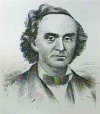
In the meantime, Missouri Governor Claiborne Fox Jackson had been working hard to establish the Missouri State Guard.  A committed secessionist, Governor Jackson, had ordered the Missouri State Guard units to assemble in their districts. In St. Louis, the militia district commander, Brigadier General Daniel M. Frost, established an encampment at Lindell Grove (the current campus of St. Louis University on Lindell Boulevard) in the western part of St. Louis. There were close to 900 men encamped at what they dubbed "Camp Jackson." Jackson's aim was the Federal Arsenal of St. Louis, the largest store of arms west of the Mississippi River.
A committed secessionist, Governor Jackson, had ordered the Missouri State Guard units to assemble in their districts. In St. Louis, the militia district commander, Brigadier General Daniel M. Frost, established an encampment at Lindell Grove (the current campus of St. Louis University on Lindell Boulevard) in the western part of St. Louis. There were close to 900 men encamped at what they dubbed "Camp Jackson." Jackson's aim was the Federal Arsenal of St. Louis, the largest store of arms west of the Mississippi River.
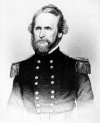
Opposing the Missouri State Guard was recently promoted Brigadier General Nathaniel Lyon. Lyon ordered the recently mustered regiments, including Major Osterhaus's Second Missouri Volunteers, to keep an eye on the Missouri State Guard encamped at Camp Jackson. Lyon surrounded Camp Jackson with thousands of U.S. Army troops. Outnumbered eight or nine to one, Frost had no choice but to surrender. Lyon offered then parole if they would swear an oath of allegiance to the United States. Since only ten men accepted this offer, Lyon marched the rest (669 men), under guard, through the city streets back to the arsenal.
Major Osterhaus was a little understated when he wrote about the Camp Jackson Affair:
"The Camp with all men, materials etc. was taken, and the prisoners of war escorted by my Command to the U.S. Arsenal, when they were placed in Custody.”
There were a great many onlookers watching the procession. The pro-Southern onlookers were hurling insults at the Federal soldiers. Eventually, they began to throw things at the soldiers. Someone in the crowd fired a pistol at the Federals. Additional shots were fired. The German recruits responded by firing into the crowd of onlookers. Eventually, Lyon was able to get his troops under control. Twenty-eight civilians were killed and around 75 were wounded. Two Federal soldiers were killed along with three of the prisoners. The "Camp Jackson Affair" received a lot of publicity and greatly increased the tensions in Missouri.


Governor Jackson soon appointed Sterling Price as Major General of the Missouri State Guard. Not long after that, Union Brigadier General Nathaniel Lyon declared war on Jackson and Price were rebels and initiated a campaign to capture them. In June of 1861, Lyon loaded about 2,000 troops onto steamboats and headed for Jefferson City, Missouri. Upon finding that the Price and Jackson were not there, he left a small force to occupy the state capital and continued on to Boonville with about 1,700 men.

Major Joseph Osterhaus arrived too late to participate in the capture of Jefferson City, but his battalion was in the lead as the Federals moved towards Boonville. Lyon ordered Osterhaus's battalion of three companies ahead as skirmishers. Waiting for him in Boonville was Colonel John S. Marmaduke and about 500 Missouri State Guard troops. Twenty minutes after Federal artillery began pounding the Missouri State Guard's positions, Marmaduke ordered his troops to withdraw. Osterhaus would continue to lead his battalion in the Federal pursuit of the Missouri State Guard.
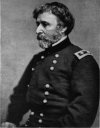
On July 31, 1861, newly appointed commander of the Western Department, Major General John Charles Fremont, appointed Osterhaus an Acting Colonel and authorized him to raise a regiment. Osterhaus was fully engaged in the pursuit of the Missouri State Guard, but sent one of his aides back to St. Louis to begin recruiting the regiment.
On August 10, 1861 during the initial stages of the Battle of Wilson's Creek, Osterhaus's battalion was key in protecting the Federal's right flank. Osterhaus wrote about this in his official report:
“I advanced with my command in double quick, and arrived at the edge of a valley just in time to see at least one thousand men, cavalry, advancing undoubtedly with the intention to flank our right. The whole force was in the very best range for my Minie rifles. I fired into them about six times by battalion fire, and most effectively; the report of my fire attracted the attention of the gallant commander of the artillery on my left, Capt. Totten, who detailed immediately two of his guns to my assistance. A few rounds of canister did fearful execution in the enemy's ranks, and in a short time he disappeared totally from the battle field. Our right flank was secured.”
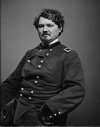
The Southerners would launch two more attacks against the Federal right, each of which was successfully repelled. When the Southerners shifted towards the Union center, Brigadier General Nathaniel Lyon ordered Osterhaus to move his battalion to the left. Once again Osterhaus's battalion was in the middle of the fighting. The Southerners were turned back once again. Lyon had been killed in the earlier fighting and the Federal command had gone to Major Samuel Sturgis. Sturgis ordered a withdrawal around 11:30 am and ordered Osterhaus's battalion to cover the Federal withdrawal.

After returning from Wilson's Creek, Osterhaus had orders to proceed to St. Louis and take command of his new regiment, the 12th Missouri Infantry. By September, Acting Colonel Osterhaus was given command of the Second Brigade in Franz Sigel's Third Division. On December 19, 1861, Osterhaus was able to remove the “Acting” from his rank as he received a promotion to Colonel of Volunteers.

During the Pea Ridge Campaign of 1862, Colonel Osterhaus commanded the 1st Brigade in Brigadier Franz Sigel's First Division. On March 7th, the first day of the Battle of Pea Ridge, Union commander, Brigadier General Samuel R. Curtis, ordered Osterhaus to take the Leetown Road on a reconnaissance in force. His orders were to determine the enemy's location and strength. As Colonel Osterhaus emerged from the woods north of Leetown, he saw 10,000 Confederates marching east towards Elkhorn Tavern.  It was Brigadier General Ben McCulloch's division moving to join up with Major General Sterling Price in the Federal rear. Osterhaus had about 2,000 men to two batteries of six artillery pieces. Immediately sending word to Curtis, Osterhaus decided to attack in order to prevent the Confederates from joining up with Price. It was during this fighting that Confederate Generals McCulloch and McIntosh were killed and their division scattered in defeat.
It was Brigadier General Ben McCulloch's division moving to join up with Major General Sterling Price in the Federal rear. Osterhaus had about 2,000 men to two batteries of six artillery pieces. Immediately sending word to Curtis, Osterhaus decided to attack in order to prevent the Confederates from joining up with Price. It was during this fighting that Confederate Generals McCulloch and McIntosh were killed and their division scattered in defeat.
That night, Osterhaus's Brigade spent the night on the Union left. Early the next morning, Osterhaus went out to prepare for troop deployments and discovered a knoll just west of the Confederate position around Elkhorn Tavern. Osterhaus quickly sent word back to Sigel, who ordered his batteries to deploy on the knoll. From this commanding position, the Federal batteries quickly overwhelmed the Confederate positions. By mid-morning, the Confederates had begun their withdrawal and the battle was over.

 In May of 1862, Osterhaus finally received his promotion to Brigadier General of U.S. Volunteers. Following Pea Ridge, Osterhaus would participate in the Federal Operations on the White River as Major General Samuel R. Curtis went against Confederates under the command of Major General Thomas C. Hindman.
In May of 1862, Osterhaus finally received his promotion to Brigadier General of U.S. Volunteers. Following Pea Ridge, Osterhaus would participate in the Federal Operations on the White River as Major General Samuel R. Curtis went against Confederates under the command of Major General Thomas C. Hindman.
Vicksburg Campaign

Brigadier General Osterhaus's next assignment would be to command a division in the Federal campaign against Vicksburg, Mississippi.

In January 1863, Major General John McClernand planned to capture the Confederate fort, Fort Hindman, near Arkansas Post on the Arkansas River. Just days before the attack, McClernand had placed Osterhaus in command of the Second Division in Brigadier General George W. Morgan's Second Corps. Osterhaus was now in command of ten regiments. During the Federal attack against Fort Hindman, Osterhaus directed his artillery against the Confederate artillery. What resulted was the destruction of several of the Confederate's artillery pieces. This led directly to the successful infantry attack and subsequent surrender of the fort by the Confederates. Brigadier General Osterhaus would write about this in his official report:
“This cannonade lasted fully two hours, during the whole of which time I was near Lieutenant Webster's section of artillery, my presence not being necessary at any other place, and I consider it my duty to state that I never saw a better officer or better men serving artillery. Cool, deliberate, and intrepid, they sent their deadly shot against the enemy's stronghold, their commander controlling every round and its effect, the men quietly obeying his orders without the very superfluous huzzaing and yelling, which is incompatible with the dignity of the arm of artillery. I heartily congratulate Lieutenant Webster and his men on their great success. The reduction of the lower casemate and the silencing of three or four formidable guns are their exclusive merit.”

By February of 1863, Major General Ulysses S. Grant had been placed in overall command of the Union armies engaged in the Vicksburg Campaign. Brigadier General Osterhaus would remain in command of the 9th Division in McClernand's 13th Corps.

In the Spring of 1863, Grant hatched a plan to march south on the western side of the Mississippi River and then cross the river south of Vicksburg. Admiral David Porter would run his gunboats past the Vicksburg Batteries and assist Grant's river crossing. Grant gave McClernand's 13th Corps the responsibility to lead this march, and McClernand ordered Osterhaus's 9th Division into the lead. The Federal infantry reached a point just upstream from the Confederate outpost at Grand Gulf, Mississippi and waited for the arrival of the Navy. After their arrival, Porter began a bombardment but it proved to be unsuccessful. Grant decided to move further south and cross the river down at Bruinsburg. Once across the river, the Federals headed for Port Gibson

Brigadier General Osterhaus's 9th Division would be part of the Federal attack on the Confederate forces at Port Gibson. The Federal advance on May 1st was stalled until Major General James McPherson sent two of his regiments around the Confederate right flank. Once the Confederate position had been flanked, Osterhaus ordered his division forward in a coordinated attack. The assault was successful and the Confederates withdrew from Port Gibson and Grand Gulf back towards Vicksburg. Osterhaus late described this in his official report:
“The enemy's attention being drawn to a great extent to the threatened attack on his right flank, he failed to oppose successfully the advances of the One Hundred Fourteenth Ohio and Forty-ninth Indiana. They thus could pass over the narrow defile in front of me and by turning to the right flank gained a position in the immediate neighborhood of the enemy...I immediately ordered the One Hundred Fourteenth Ohio and Forty-ninth Indiana to charge the crest of the hill, which was the nucleus of the Rebel position. I led the charge personally, ordering at the same time the Forty-second and One Hundred Twentieth Ohio and Sixty-ninth Indiana, and One Hundred Eighteenth Illinois Regiments to advance in eschelon.
The charge was a complete success.”

Osterhaus was wounded in the fighting that took place during the Battle of Black River Bridge. Once the Confederates withdrew into the fortifications of Vicksburg, Osterhaus overcame his leg wound and led his division in the Federals assaults ordered by Grant on May 19th and May 22nd. Both attacks failed and Grant settled in for a siege. During the siege, Osterhaus's 9th Division was sent east to the Big Black River to guard against any attack from the east by Confederate General Joe Johnston.
After the fall of Vicksburg, Grant's large army was broken up. When the 9th Division was decommissioned, Brigadier General Osterhaus was relieved of command. Osterhaus returned home on a 20-day furlough to wait for his reassignment.

Chattanooga Campaign
It was during the Chattanooga Campaign that Osterhaus's wife, Matilde, died at age 38. She would be buried in Bellefontaine Cemetery in St. Louis, Missouri.

After Brigadier General Osterhaus returned from his furlough, Grant assigned him to Major General William T. Sherman's 15th Corps and Sherman put Osterhaus in command of the 1st Division.


Following the Federal defeat at the Battle of Chickamauga, Union Major General William Rosecrans had retreated to Chattanooga, Tennessee where the Federals were under siege by the Confederate Army commanded by General Braxton Bragg. General-in-Chief Henry Halleck ordered Grant to send a relief column to Chattanooga and Grant gave the assignment to Sherman.


Osterhaus's 1st Division was detached from Sherman's Corps and cooperated with Major General Joe Hooker during the attack on Lookout Mountain. The attack on November 24th was successful and Osterhaus was able to capture more than a thousand Confederate prisoners. During the next day's fighting at Missionary Ridge, Osterhaus discovered an uncovered road that led to the Confederate rear. Osterhaus led his division along this road into the rear of the Confederates. The flanking movement worked and sent the Confederates reeling. The Confederate defeat was completed once Major General George Thomas's Army of the Cumberland attacked up Missionary Ridge. Osterhaus reported the following in his official report:
“... formed my command in an oblique line of two échelons, pushing the left (four regiments of Second Brigade) well forward toward the crest of Missionary Ridge and extending with the right echelon (First Brigade) well down the slope of the hill. Two battalions of First Brigade followed in reserve behind the right wing. While making these preparations I could observe the movements of General Cruft, who had ascended the southern slope of Missionary Ridge from the gap, and had by this time engaged the rebels. The attack of this general was most opportune, as it concentrated the whole attention of the enemy in that direction and gave me a chance to prepare a decisive blow in his flank and rear.
The men of my division advanced splendidly, overcoming all the obstacles which nature and the enemy had prepared to dispute our ascent. They went up in double-quick time, and the skirmishers in front of my extreme left, Fourth Iowa Infantry, pushed up to within 50 yards of the enemy before opening on him. The forward Echelon (Second Brigade) fired a salvo into the terrified rebels, who at once fell back, hoping to make good their escape. They would have succeeded in this, but for the funnel which my oblique line formed. The left of the second échelon (First Brigade) had at this moment just reached the crest of the hill, but, of course, far in advance of the Second Brigade.
Major Warner, the very able commander of the Seventy-sixth Ohio Infantry, understood the maneuver completely. He wheeled his regiment to the right, while the two regiments in reserve did the same, and advancing in one line with the Seventy-sixth Ohio Infantry across the whole slope of the hill, captured a very large number of the enemy.
Finding their escape impossible, they obeyed my order to lay down their arms almost instantly, and my division took over 2,000 prisoners, a large number of small-arms, one piece of artillery (brass 6-pounder)."

Brigadier General Peter J. Osterhaus would next lead his division against the Confederates in the Battle of Ringgold Gap. The Confederates were in full retreat and Ringgold Gap was their primary escape route. Union Major General Hooker was in pursuit and had sent Osterhaus ahead to capture the Confederate supply train. But the Confederate rear guard commanded by Major General Patrick R. Cleburne, had set up an ambush and Osterhaus was sent into the trap by Hooker. Osterhaus's division would suffer 304 casualties during this battle.
Atlanta Campaign



Following the Chattanooga Campaign, U.S. Grant was promoted to Lieutenant General and placed in charge of the entire war effort. He put Major General William Tecumseh Sherman in command of going after Confederate General Joe Johnston's army and capturing Atlanta, Georgia.
As part of a general reorganization, Osterhaus's division was reclassified as the 1st Division in Major General John A. Logan's 15th Corps in McPherson's Army of the Tennessee. The Union Army began its march into Georgia in late April, 1864. Several days later, Major General Peter J. Osterhaus fell ill due to a resurgence of his malaria.



The first battle of the campaign found the Federals attacking Confederate fortifications around Resaca, Georgia protecting the Confederate's supply line. On May 13th, Osterhaus had recovered sufficiently from his illness to be back at the head of the 1st Division deployed on the Union right with the rest of the 15th Corps. For three days the two sides fought to no advantage. On May 15th, the Federals were able to get some troops across the Oostanula River threatening the Confederate railroad supply line. Confederate General Johnston was forced to withdraw.

The 1st Division would see its next action at the Battle of Dallas towards the end of May, 1864. Osterhaus sent his 2nd Brigade under the command of Colonel James A. Williamson forward on the evening of May 25th. Williamson encountered large number of the enemy and sent word back to Osterhaus for reinforcements. Osterhaus was under the belief that another Federal Division was on his left flank so he refused to sent additional support to Williamson. But the other Federal Division was not there and the 2nd Brigade was in danger of being flanked by a large Confederate force. Once the attack began, Osterhaus realized his error and sent more troops forward.
By the end of June, 1864, Johnston withdrew his Confederate Army into his fortification atop Kennesaw Mountain just north of Atlanta, Georgia. On the morning of June 27th, Sherman assaulted the Confederate positions and was repulsed, suffering heavy casualties. Osterhaus's 1st Division was held in reserve during the Battle of Kennesaw Mountain.
On July 15th, Osterhaus was again ill and began a 20-day sick leave. It was during this sick leave that Osterhaus was notified that he had been promoted to Major General of Volunteers. Sherman was very angry about this promotion, believing that none of his officers should be promoted until the conclusion of the campaign. He voiced his complaint in the following message to the Inspector General:
“I have your dispatch of yesterday, announcing the appointment of General Osterhaus as major-general. I do not object to his appointment, but I wish to put on record this my emphatic opinion, that it is an act of injustice to officers who stand by their posts in the day of danger to neglect them and advance such as Hovey and Osterhaus, who left us in the midst of bullets to go to the rear in search of personal advancement. If the rear be the post of honor, then we had better all change front on Washington.”

President Lincoln heard of the complaint and sent the following reply to Sherman:
“I have just seen yours complaining of the appointment of Hovey and Osterhaus. The point you make is unquestionably a good one, and yet please hear a word from us. My recollection is that both General Grant and yourself recommended both H[ovey] and O[sterhaus] for promotion, and these, with other strong recommendations, drew committals from us which we could neither honorably or safely disregard. We blamed H[ovey] for coming away in the manner in which he did, but we knew he had apparent reason to feel disappointed and mortified, and we felt it was not best to crush one who certainly had been a good soldier. As to O[sterhaus], we did not know of his leaving at the time we made the appointment, and do not now know the terms on which he left. Not to have appointed him, as the ease appeared to us at the time, would have been almost, if not quite, a violation of our word. The word was given on what we thought was high merit and somewhat on his nationality. I beg you to believe we do not act in a spirit of disregarding merit. We expect to await your programme for further changes and promotions in your army. My profoundest thanks to you and your whole army for the present campaign so far.”
Sherman would send the following reply to President Lincoln:
“SIR: Your dispatch of yesterday is received. I beg you will not regard me as fault finding, for I assert that I have been well sustained in every respect during my entire service. I did not suppose my dispatches would go outside the offices at the War Department. I did not suppose you were troubled with such things. Hovey and Osterhaus are both worthy men, and had they been promoted on the eve of the Vicksburg campaign, it would have been natural and well accepted; but I do think you will admit that their promotion, coming to us when they had gone to the rear, the one offended because I could not unite in the same division five infantry and five cavalry regiments, and the other for temporary sickness. You can see how ambitious aspirants for military fame regard these things. They come to me and point them out as evidences that I am wrong in encouraging them to a silent, patient discharge of duty. I assure you that every general of my army has spoken of it and referred to it as evidence that promotion results from importunity and not from actual service. I have refrained from recommending any thus far in the campaign, as I think we should reach some stage in the game before stopping to balance accounts or writing history. I assure you that I do think you have conscientiously acted throughout the war with marked skill in the matter of military appointments, and that as few mistakes have been made as could be expected. I will furnish all my army and division commanders with a copy of your dispatch, that they may feel reassured.

With great respect”
Osterhaus was unaware that this was going on while he was on sick leave. When he finally returned from leave, Sherman had Atlanta under siege and Confederate General John B. Hood had replaced General Joe Johnston in command of the Confederate forces protecting Atlanta.

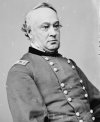
Instead of attacking the Confederate fortifications of Atlanta directly, Sherman decided to try to cut off their supply lines. He sent the 15th Corps (including Osterhaus's 1st Division) to take the railroad depot at Jonesborough. Here the Federals dug entrenchments against the expected Confederate assault. The assault occurred on August 31st and the Confederate attack failed to break the Federal strangle hold on their supply lines. Confederate General Hood realized that his position was untenable and gave the orders to abandon Atlanta. Sherman sent the following message to Chief-of-Staff Henry Halleck:
“In the night the enemy retreated south, and we have followed him to another of his well-chosen and hastily constructed lines, near Lovejoy's. Hood, at Atlanta, finding me on his road, the only one that could supply him, and between him and a considerable part of his army, blew up his magazines in Atlanta and left in the night-time, when the Twentieth Corps, General Slocum, took possession of the place. So Atlanta is ours, and fairly won. I shall not push much farther on this raid, but in a day or so will move to Atlanta and give my men some rest. Since May 5 we have been in one constant battle or skirmish, and need rest.”
End of the War
When his Corps Commander, Major General Logan was sent by Lincoln to campaign for his reelection, Sherman put Major General Osterhaus in temporary command of the 15th Corps. He was given command of the 15th Corps on September 22, 1864, just before Sherman would start his “march to the sea” through Georgia.

At the beginning of the Savannah Campaign, Osterhaus's 15th Corps would have more than 15,000 effectives. The 15th Corps would be positioned on the Federal right (southern) wing.

After the Federals successfully reached Savannah, Georgia, Major General Osterhaus was reassigned. He became the Chief-of-Staff for Major General Edmund R. S. Canby, who had his headquarters in New Orleans, Louisiana. Osterhaus would be Canby's Chief-of-Staff during the Mobile Campaign's Battles of Spanish Fort and Fort Blakely in April of 1865.



On April 9, 1865, Confederate General Robert E. Lee surrendered the Army of Northern Virginia to Union Lieutenant General Ulysses S. Grant. President Lincoln would be assassinated by John Wilkes Boothe on April 15th. Confederate General Joe Johnston surrendered the Army of Tennessee to Union Major General William T. Sherman on April 26th. Osterhaus was present when Confederate General Richard Taylor surrendered the last remaining Confederate force east of the Mississippi River to Major General Edmund R. S. Canby on May 8th. Major General Osterhaus, himself, would sign the document accepting the surrender of Lieutenant General Simon Bolivar Buckner on behalf of the Confederate forces west of the Mississippi River.
Post-Civil War Role

Following the Confederate surrenders, Major General Canby appointed Major General Osterhaus to be the Military Commander of the District of Mississippi. Osterhaus would remain in this position until he left the Army on January 15, 1866.
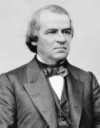
President Andrew Johnson would appoint Peter Joseph Osterhaus to be the United States Consul to Lyon, France. Congress approved the appointment on June 16, 1866. Osterhaus left for Europe and would never return to his adopted country. He served as consul for 11 years under Presidents Johnson and Grant.
Osterhaus resigned from government service in 1877 and moved his family to Mannheim, Germany. Osterhaus died on January 2, 1917 and was buried in Koblenz, Germany.
References
- The American Battlefield Protection Program. CWSAC Battle Summaries: Boonville. http://www.nps.gov/abpp/battles/mo001.htm
- The American Battlefield Protection Program. CWSAC Battle Summaries: Wilson's Creek. http://www.nps.gov/abpp/battles/mo004.htm
- The American Battlefield Protection Program. CWSAC Battle Summaries: Pea Ridge. http://www.nps.gov/abpp/battles/ar001.htm
- The American Battlefield Protection Program. CWSAC Battle Summaries: Arkansas Post. http://www.nps.gov/abpp/battles/ar006.htm
- The American Battlefield Protection Program. CWSAC Battle Summaries: Grand Gulf. http://www.nps.gov/abpp/battles/ms004.htm
- The American Battlefield Protection Program. CWSAC Battle Summaries: Port Gibson. http://www.nps.gov/abpp/battles/ms006.htm
- The American Battlefield Protection Program. CWSAC Battle Summaries: Raymond. http://www.nps.gov/abpp/battles/ms007.htm
- The American Battlefield Protection Program. CWSAC Battle Summaries: Champion Hill. http://www.nps.gov/abpp/battles/ms009.htm
- The American Battlefield Protection Program. CWSAC Battle Summaries: Vicksburg. http://www.nps.gov/abpp/battles/ms011.htm
- The American Battlefield Protection Program. CWSAC Battle Summaries: Chattanooga. http://www.nps.gov/abpp/battles/tn024.htm
- The American Battlefield Protection Program. CWSAC Battle Summaries: Ringgold Gap. http://www.nps.gov/abpp/battles/ga005.htm
- The American Battlefield Protection Program. CWSAC Battle Summaries: Resaca. http://www.nps.gov/abpp/battles/ga008.htm
- The American Battlefield Protection Program. CWSAC Battle Summaries: Dallas. http://www.nps.gov/abpp/battles/ga011.htm
- The American Battlefield Protection Program. CWSAC Battle Summaries: Kennesaw Mountain. http://www.nps.gov/abpp/battles/ga015.htm
- The American Battlefield Protection Program. CWSAC Battle Summaries: Atlanta. http://www.nps.gov/abpp/battles/ga017.htm
- The American Battlefield Protection Program. CWSAC Battle Summaries: Jonesborough. http://www.nps.gov/abpp/battles/ga022.htm
- The American Battlefield Protection Program. CWSAC Battle Summaries: Spanish Fort. http://www.nps.gov/abpp/battles/al005.htm
- The American Battlefield Protection Program. CWSAC Battle Summaries: Fort Blakely. http://www.nps.gov/abpp/battles/al006.htm
- Bearss, Edwin C. The Battle of Wilson's Creek
Cassville: Wilson's Creek National Battlefield Foundation, 1992.
- Brooksher, William R. Bloody Hill: The Civil War Battle of Wilson's Creek. Washington: Brassey's, 1995.
- Gabel, Christopher R. Staff Ride Handbook for the Vicksburg Campaign, December 1862-July 1863. Fort Leavenworth: Combat Studies Institute, 2001.
- Goss, Thomas J. The War Within the Union High Command: Politics and Generalship During the Civil War (Modern War Studies)
Lawrence: University Press of Kansas, 2003
- Hewett, Janet, Noah Andre Trudeau, and Bryce A. Suderow, eds. Supplement to the Official records of the Union and Confederate Armies. Wilmington, NC : Broadfoot Publishing Company, 1994.
- Knapp, George E. The Wilson's Creek Staff Ride and Battlefield Tour. Fort Leavenworth: Combat Studies Institute Press, 1993.
- Piston, William G. and Richard W Hatcher III. Wilson's Creek: The Second Battle of the Civil War and the Men Who Fought It. Chapel Hill: University of North Carolina Press, 2000.
- Shea, William L. and Earl J. Hess. Pea Ridge: Civil War Campaign in the West. Chapel Hill: University of North Carolina Press, 1992.
- Townsend, Mary Bobbitt. Yankee Warhorse: A Biography of Major General Peter J. Osterhaus (Shades of Blue and Gray)
Columbia: University of Missouri Press, 2010.
- U.S. War Department, The War of the Rebellion: A Compilation of the Official Records of the Union and Confederate Armies, 70 volumes in 4 series. Washington, D.C.: United States Government Printing Office, 1880-1901.
- Series 1, Volume 3 – Boonville, Wilson's Creek
- Series 1, Volume 8 – Pea Ridge
- Series 1, Volume 17: 1 – Arkansas Post
- Series 1, Volume 24: 1 – Milliken's Bend, Port Gibson, Jackson
- Series 1, Volume 24: 2 – Champion Hill, Big Black River, Siege of Vicksburg
- Series 1, Volume 31: 2 – Chattanooga, Ringgold Gap
- Series 1, Volume 38: 3 – Atlanta Campaign
- Series 1, Volume 39: 1 – Savannah Campaign
- Series 1, Volume 44 – Savannah Campaign
- Series 1, Volume 49:1 – Mobile Campaign
- Ware, Eugene Fitch. The Lyon campaign in Missouri : being a history of the First Iowa Infantry and of the causes which led up to its organization, and how it earned the thanks of Congress, which it got, together with a birdseye view of the conditions in Iowa preceding the great Civil War of 1861. Iowa City: Press of the Camp Pope Bookshop, 1991.
- Woodworth, Steven E. Nothing but Victory: The Army of the Tennessee, 1861-1865
New York: Alfred A. Knopf, 2005.
Back: Henry C. Pate
Next: Francis P. Blair, Jr.
